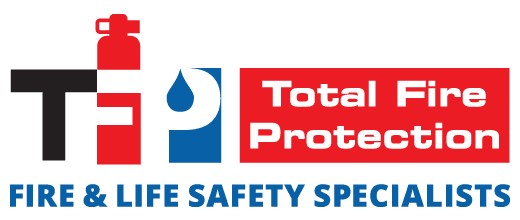Photoluminescent technology has become increasingly popular in fire safety and emergency signage, yet numerous misconceptions surround its application and effectiveness. This article aims to clarify common misunderstandings and answer frequently asked questions about photoluminescent markings, helping property managers, building owners, and safety professionals make informed decisions about their fire safety measures.
How Do Photoluminescent Markings Work?
 A common misconception about photoluminescent markings is that they require an electrical source to be ‘charged.’ These materials absorb ambient lighting—natural or artificial light sources—and store this energy. They then re-emit the stored light when conditions become dark, such as during a power outage. This capability allows them to provide visible guidance for hours without any electrical power, ensuring they remain highly effective in guiding occupants to safety even when traditional electric signage may fail.
A common misconception about photoluminescent markings is that they require an electrical source to be ‘charged.’ These materials absorb ambient lighting—natural or artificial light sources—and store this energy. They then re-emit the stored light when conditions become dark, such as during a power outage. This capability allows them to provide visible guidance for hours without any electrical power, ensuring they remain highly effective in guiding occupants to safety even when traditional electric signage may fail.
Are Photoluminescent Markings as Reliable as Traditional Electric Signage?
There’s a frequent misunderstanding that photoluminescent markings are less reliable because they seem more straightforward in design. Contrary to this belief, photoluminescent markings are just as reliable, if not more so, than traditional electric signage. They are specifically designed to function optimally without electrical power, providing consistent illumination that is crucial during emergencies. This reliability ensures that exit paths remain visible, even during complete power failures. Additionally, the robust nature of photoluminescent materials means they are less susceptible to damage and malfunctions that often plague electrical components, further enhancing their dependability in safety-critical situations.
What Maintenance Do Photoluminescent Markings Require?
 A common question about photoluminescent markings is whether they require frequent replacement and maintenance. However, the reality is quite the opposite. Photoluminescent markings are celebrated for their low maintenance requirements, distinguishing them significantly from electric signs, often necessitating bulb replacements, battery checks, and regular electrical testing. The upkeep for photoluminescent markings is minimal—usually, just periodic cleaning to keep the surfaces free of dust and debris. This straightforward maintenance ensures their effectiveness and reliability, making them a cost-effective and hassle-free choice for long-term building management.
A common question about photoluminescent markings is whether they require frequent replacement and maintenance. However, the reality is quite the opposite. Photoluminescent markings are celebrated for their low maintenance requirements, distinguishing them significantly from electric signs, often necessitating bulb replacements, battery checks, and regular electrical testing. The upkeep for photoluminescent markings is minimal—usually, just periodic cleaning to keep the surfaces free of dust and debris. This straightforward maintenance ensures their effectiveness and reliability, making them a cost-effective and hassle-free choice for long-term building management.
Are Photoluminescent Markings Compliant with Safety Regulations?
There’s a misconception that photoluminescent markings do not meet all regulatory standards, which might deter some from considering their use. In truth, these markings are meticulously manufactured to comply with the latest safety regulations, including stringent guidelines set by the National Fire Protection Association (NFPA) and various local building codes. Often, these regulations explicitly recommend or require photoluminescent signage as a crucial component of approved emergency egress systems. Total Fire Protection takes this compliance a step further by ensuring that all its photoluminescent products not only meet but often exceed these standards, thus providing enhanced safety for all building occupants.
Can Photoluminescent Markings Save Money?
 It’s often believed that the higher initial costs of photoluminescent markings make them more expensive in the long run than traditional electric signs. However, this perspective overlooks the substantial cost savings accruing with photoluminescent technology. These markings do not require electrical wiring, significantly reducing installation costs and virtually eliminating ongoing electrical expenses. Additionally, their minimal maintenance needs further decrease long-term upkeep expenses. Since photoluminescent markings operate without consuming electricity, they can also significantly reduce energy bills, ensuring cost savings that continue to benefit building managers year after year.
It’s often believed that the higher initial costs of photoluminescent markings make them more expensive in the long run than traditional electric signs. However, this perspective overlooks the substantial cost savings accruing with photoluminescent technology. These markings do not require electrical wiring, significantly reducing installation costs and virtually eliminating ongoing electrical expenses. Additionally, their minimal maintenance needs further decrease long-term upkeep expenses. Since photoluminescent markings operate without consuming electricity, they can also significantly reduce energy bills, ensuring cost savings that continue to benefit building managers year after year.
What Does This Mean for the Future?
Photoluminescent markings offer a reliable, compliant, cost-effective solution for emergency egress systems. Their ability to operate without power and minimal maintenance and operational costs make them an excellent investment for any property focused on safety and sustainability.




